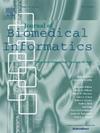Deep learning in surgical process modeling: A systematic review of workflow recognition
IF 4
2区 医学
Q2 COMPUTER SCIENCE, INTERDISCIPLINARY APPLICATIONS
引用次数: 0
Abstract
Objective: The application of artificial intelligence (AI) in health care has led to a surge of interest in surgical process modeling (SPM). The objective of this study is to investigate the role of deep learning in recognizing surgical workflows and extracting reliable patterns from datasets used in minimally invasive surgery, thereby advancing the development of context-aware intelligent systems in endoscopic surgeries. Methods: We conducted a comprehensive search of articles related to SPM from 2018 to April 2024 in the PubMed, Web of Science, Google Scholar, and IEEE Xplore databases. We chose surgical videos with annotations to describe the article on surgical process modeling and focused on examining the specific methods and research results of each study. Results: The search initially yielded 2937 articles. After filtering on the basis of the relevance of titles, abstracts, and content, 59 articles were selected for full-text review. These studies highlight the widespread adoption of neural networks, and transformers for surgical workflow analysis (SWA). They focus on minimally invasive surgeries performed with laparoscopes and microscopes. However, the process of surgical annotation lacks detailed description, and there are significant differences in the annotation process for different surgical procedures. Conclusion: Time and spatial sequences are key factors determining the identification of surgical phase. RNN, TCN, and transformer networks are commonly used to extract long-distance temporal relationships. Multimodal data input is beneficial, as it combines information from surgical instruments. However, publicly available datasets often lack clinical knowledge, and establishing large annotated datasets for surgery remains a challenge. To reduce annotation costs, methods such as semi supervised learning, self-supervised learning, contrastive learning, transfer learning, and active learning are commonly used.

外科过程建模中的深度学习:工作流程识别的系统回顾。
目的:人工智能(AI)在医疗保健领域的应用引起了人们对手术过程建模(SPM)的兴趣。本研究的目的是探讨深度学习在识别手术工作流程和从微创手术中使用的数据集中提取可靠模式中的作用,从而促进内镜手术中上下文感知智能系统的发展。方法:我们在PubMed、Web of Science、b谷歌Scholar和IEEE explore数据库中全面检索2018年至2024年4月与SPM相关的文章。我们选择带有注释的手术视频来描述这篇关于手术过程建模的文章,并重点考察了每项研究的具体方法和研究结果。结果:搜索最初产生了2937篇文章。根据题目、摘要和内容的相关性进行筛选后,选择59篇文章进行全文评审。这些研究强调了神经网络和变压器在手术工作流程分析(SWA)中的广泛应用。他们专注于用腹腔镜和显微镜进行的微创手术。然而,手术注释的过程缺乏详细的描述,不同手术过程的注释过程存在显著差异。结论:时间和空间序列是确定手术期的关键因素。RNN、TCN和变压器网络通常用于提取远距离时间关系。多模式数据输入是有益的,因为它结合了手术器械的信息。然而,公开可用的数据集往往缺乏临床知识,建立大型外科注释数据集仍然是一个挑战。为了降低标注成本,通常使用半监督学习、自监督学习、对比学习、迁移学习和主动学习等方法。
本文章由计算机程序翻译,如有差异,请以英文原文为准。
求助全文
约1分钟内获得全文
求助全文
来源期刊

Journal of Biomedical Informatics
医学-计算机:跨学科应用
CiteScore
8.90
自引率
6.70%
发文量
243
审稿时长
32 days
期刊介绍:
The Journal of Biomedical Informatics reflects a commitment to high-quality original research papers, reviews, and commentaries in the area of biomedical informatics methodology. Although we publish articles motivated by applications in the biomedical sciences (for example, clinical medicine, health care, population health, and translational bioinformatics), the journal emphasizes reports of new methodologies and techniques that have general applicability and that form the basis for the evolving science of biomedical informatics. Articles on medical devices; evaluations of implemented systems (including clinical trials of information technologies); or papers that provide insight into a biological process, a specific disease, or treatment options would generally be more suitable for publication in other venues. Papers on applications of signal processing and image analysis are often more suitable for biomedical engineering journals or other informatics journals, although we do publish papers that emphasize the information management and knowledge representation/modeling issues that arise in the storage and use of biological signals and images. System descriptions are welcome if they illustrate and substantiate the underlying methodology that is the principal focus of the report and an effort is made to address the generalizability and/or range of application of that methodology. Note also that, given the international nature of JBI, papers that deal with specific languages other than English, or with country-specific health systems or approaches, are acceptable for JBI only if they offer generalizable lessons that are relevant to the broad JBI readership, regardless of their country, language, culture, or health system.
 求助内容:
求助内容: 应助结果提醒方式:
应助结果提醒方式:


